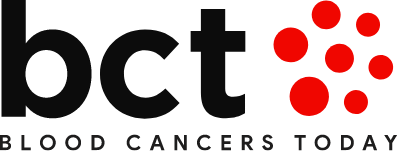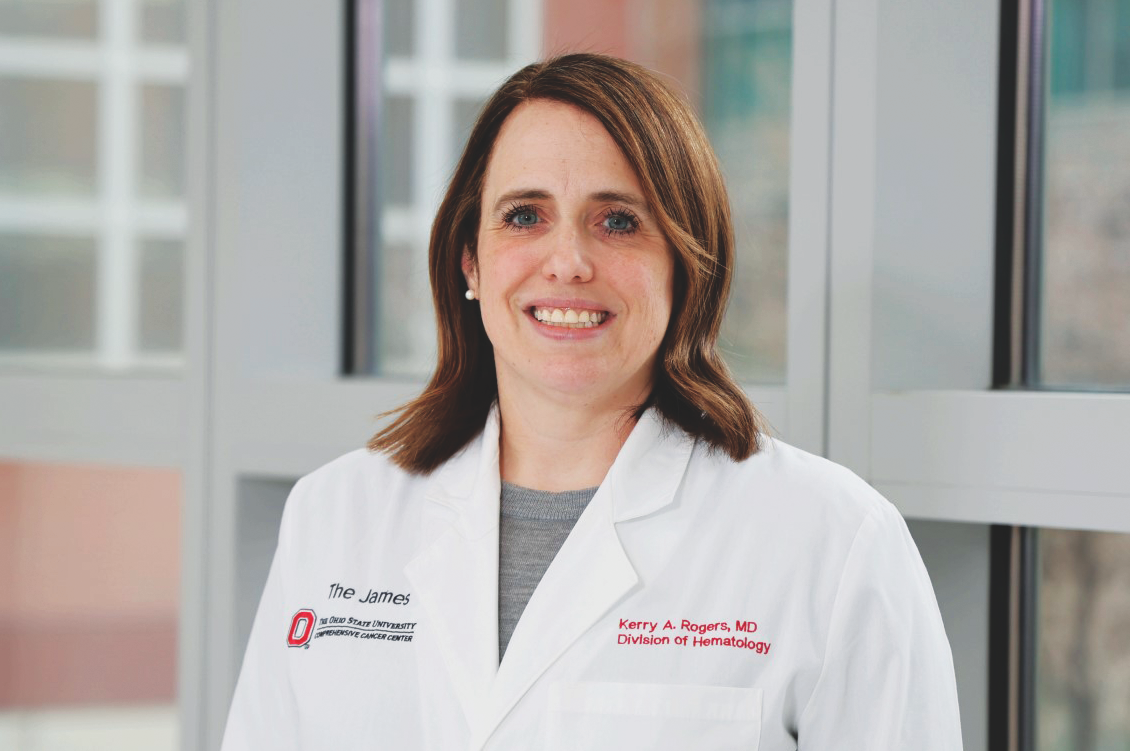
Guillermo Garcia-Manero, MD, of the Department of Leukemia at MD Anderson Cancer Center, discusses exciting research coming out of the MDS/AML Moon Shot® program and what he’s looking forward to as President-Elect 2023 of the Society of Hematologic Oncology (SOHO).
When did you develop an interest in medicine? I think I was four or five years old; I always knew I wanted to be a physician. There were no physicians or any related professionals in my family, so I guess it was an innate wish.
How did you choose hematologic oncology as a specialty and myelodysplastic syndromes (MDS) more specifically? I’m from Spain, and that’s where I went to medical school. I wanted to be an anatomical pathologist. My university had honorary students’ positions, and I got one of these studentships. I worked as an intern in the pathology department of my medical school, and I really liked that. Somehow, thanks to that position, I landed a summer research position at the Royal Free Hospital in London in a hematology lab with Dr. Gillian E. Francis.
There, I discovered that hematologists were kind of like pathologists but treating disease, and I was fascinated by this. I started my first research project as a third- or fourth-year medical student, and that was really transformative. I’m very grateful to Dr. Francis for that opportunity.
Then I moved to Philadelphia to do my residency at Thomas Jefferson University Hospital, in part because a professor, who passed a few years ago, the late Dr. Farid Haurani, was doing a sabbatical at the Royal Free. Thomas Jefferson University has a very strong hematology program called the Cardeza Foundation. I had a great mentor there, Dr. Jose Martinez, who retired a number of years ago, and that’s how I became interested in hematologic malignancies. I am still in contact with Dr. Martinez.
When I was at the Cardeza Foundation is when I really became fascinated by the treatment of patients with leukemia and related disorders. When I moved to Houston, Texas, to the MD Anderson Cancer Center, where I’ve spent my academic career, my initial main focus in the lab was the study of epigenetic alterations. I was trying to study that in relation to acute lymphoblastic leukemia. That led me to the use of epigenetic regulators, like histone deacetylase inhibitors and hypomethylating agents, and that was the beginning of my career.
At some point, Dr. Hagop Kantarjian, my department chair and a world leader in leukemia research, assigned me to the MDS program. I thought that was academic suicide, because it’s a difficult disease. In those days, there was not much going on. It was kind of a total orphan disease. I thought, “This is the end of me as an academic person,” but it really transformed my life.
Can you talk about the MDS/AML Moon Shot¨ program you run at MD Anderson? What are the goals and some of the outcomes of the program? This is a really important initiative. It started with our prior president Dr. Ronald DePinho. The idea was to focus on projects in house that if we got extra support from the institution could deliver big ideas and change outcomes. I believe large institutions should invest part of their revenue on programs that could foster internal research that may be difficult to fund through the National Institutes of Health or other traditional funding sources.
I’ve been the leader of this program ever since, and it has been a fantastic opportunity where we receive support for projects that otherwise would be difficult to fund and that have helped us significantly. We currently have four projects within the program.
One project, led by Dr. Koichi Takahashi, started looking at clonal hematopoiesis and the emergence of myeloid disorders. The second project is very important to me, because it’s the MDS project; it is led by Dr. Simona Colla. She has identified the stem cell hierarchy in patients with MDS and identified vulnerabilities that may predict who may or may not respond to particular types of therapy. That finding was totally serendipitous. We were not trying to do that, but she has analyzed almost 400 MDS samples at the stem cell level, and we have a very detailed map of how hematopoesis is distorted in those patients. This is helping us decide what will be the next line of therapy for patients.
Then, Dr. Katy Rezvany is working on a project on a new generation of natural killer chimeric antigen receptor (CAR) T cells, mostly in CD70, but it’s a platform that we could use for multiple other epitopes, covering both MDS and acute myeloid leukemia (AML). Finally, there is a very interesting project by Dr. Michael Andreeff looking at minimal residual disease from a totally different angle, particularly looking at patients with a high risk of relapse with TP53 mutation.
One thing that makes me really proud of this project is that the leaders of the projects are what you would consider junior to mid-level career investigators. Not only is this a phenomenal research tool for us that would be difficult to complete otherwise, it’s also significantly helping the careers of emerging faculty members who I think are going to be the leaders in the field in the years to come.
Mentoring them through this process is something I’m very proud of. I think this is an incredible initiative, and I would think that a lot of institutions would look into this and perhaps try to mirror it.
[Hear Dr. Garcia-Manero talk about the Moon Shot program.]
You are the 2023 SOHO President-Elect and 2024 SOHO President. Can you share your ideas for the society and what your plans are? This is a great honor, and I’m very excited. The seed of SOHO started around 20 years ago by having meetings in Houston, and it was a great forum. In the beginning, the meetings mainly focused on AML and then MDS. Then it started evolving, and we saw the need for this society to focus on malignant hematology.
SOHO has been a more educational type of meeting. It has a really strong international group of followers. Traditionally, SOHO meetings are highly educational events that are very well attended, with great interactions between the participants and speakers.
I think SOHO is ready to start an inflection point where, instead of being 100% educational, we could be more research-oriented, and perhaps use SOHO as a platform for presentations of new research.
I’m the director of the leukemia fellowship at MD Anderson, which is a fantastic program that has 10 fellows every year who have become really successful in their careers. This mentorship, and seeing how my junior colleagues come up with fantastic ideas, is very important to me. I think SOHO could be also a fantastic platform for mentorship, perhaps for individuals who are outside the United States. There’s a following from South America and the Middle East and regions that are not covered by other entities. I think this will be very important to me. That’s what I hope to achieve.
What does the future hold for SOHO? With COVID-19 and the fact that the SOHO Annual Meeting could not be in person, we did very well in terms of attendance. My view is that perhaps a hybrid format for this big meeting makes it extremely democratic.
At the beginning of COVID-19, I was invited to give a virtual seminar in India, and I saw 3,000 people who connected to this boring MDS talk. I saw people were participating from Sudan, Eritrea, Iraq, and other countries in the region. It’s unbelievable that there were people at the meeting despite all the difficulties going on in these countries. I thought, “Wow, this is a phenomenal opportunity,” because it’s unlikely that someone from one of these countries could travel to the United States to attend a traditional meeting.
SOHO is a meeting where you want to be in person, because there are so many speakers and leaders in the field, so we need to preserve that. But I think if we are able to maintain this hybrid structure and continue to reach out beyond our geographical boundaries, SOHO will continue to be strong. I’m very optimistic about the future of SOHO.
Where do you see hematologic oncology headed, and what are some exciting happenings that you’re keeping an eye on in MDS? We are living through a transformation that is phenomenal. This applies to all malignant hematology. I think genomic knowledge has been transformative. Now we are into single-cell analyses that have almost become routine. This is giving us a phenomenal understanding of hematopoiesis in these diseases. This allows us to elucidate new targets and clonal dynamics. We are also seeing the development of strong immunotherapeutics and CAR T cells in lymphoid malignancies and now perhaps moving into myeloid malignancies. This, together with the ability to combine many of these agents, is going to transform the care of patients with MDS and AML.
What are your interests outside of work? I love my family—my wife and two boys. I’ve always been a very avid reader since I was young. This is advice I give to my mentees: I think if you learn how to read and write, you can think in a different way and you will succeed in academia.
I also love sailing. I come from a small island called Mallorca in the Mediterranean. My father liked fishing, so I was always in the sea. Here in Houston, I race a Laser dinghy as much as I can. It gets me out of my head because it’s very physical. I’m now race governor for a small club in Seabrook, which is east of Houston. We have a fantastic group of around 30 people who race; they are great colleagues—none are physicians, as far as I know. We just set up this little dinghy and sail in different conditions, and it’s great.
What is one thing most people would be shocked to learn about you? That I am shy, and I can be funny. I think people think I’m a serious individual. I’m also a team player. I like interacting with people, and I really believe in team effort. I don’t really like hierarchy. I’ve always lived in this environment where we are all kind of the same—you just have different roles. That is why I love being part of the leukemia department at MD Anderson.
Guillermo Garcia-Manero, MD, currently leads the largest MDS program in the world and directs the MDS/AML Moon Shot® program at MD Anderson Cancer Center.






 © 2025 Mashup Media, LLC, a Formedics Property. All Rights Reserved.
© 2025 Mashup Media, LLC, a Formedics Property. All Rights Reserved.